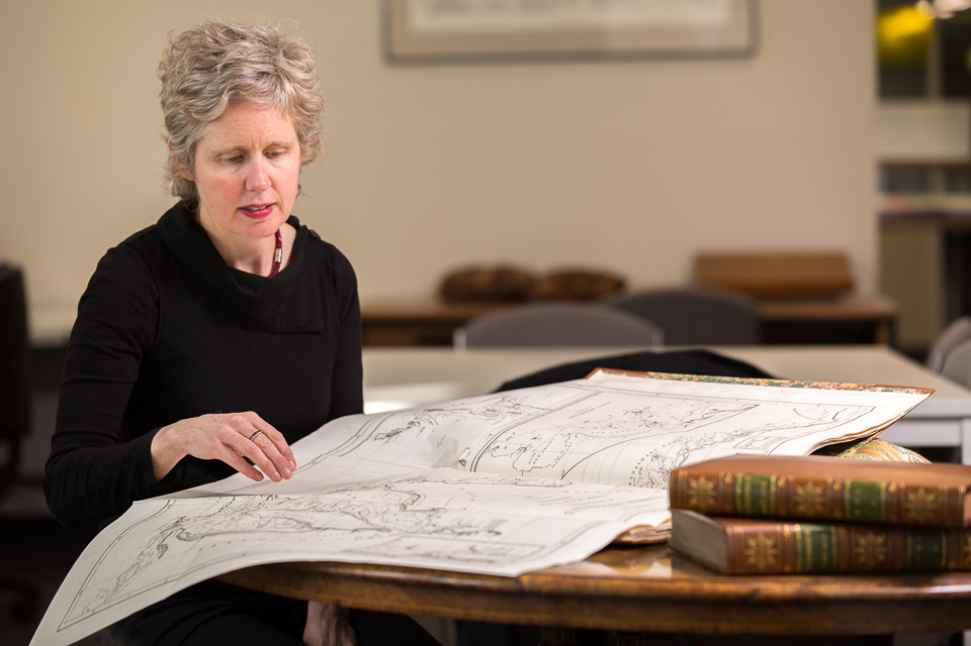Navigating new waters
As a direct descendent of Matthew Flinders’ sister, Susanna, Ms Fiona Salmon has a unique connection to the navigator for whom the University is named.
While she has always been aware of the family’s lineage, she became particularly conscious of the importance of the navigator’s legacy while living in the Northern Territory and seeing that his charts of the coastline were still in use.
“Seeing the detail of those maps and trying to fathom their making in a pre-digital age was a bit of a watershed moment for me,” Ms Salmon said.
Ms Salmon has worked in the Art Museum at Flinders since 2008. As director she curates the University’s extensive collections, including significant holdings of Aboriginal art. Like many university museums, initially established to support teaching, learning and research, the Flinders Art Museum, and more recently established City Gallery, now also serve as vibrant platforms for community engagement.
“The Indigenous collections are particularly important to our academic and public programs,” Ms Salmon said. “They provide insights into traditional customs and cultures, and what it means to be an Aboriginal person in Australia in the 21st century.”
The importance of Indigenous knowledge and cross-cultural understanding was not lost on Matthew Flinders, who took the Aboriginal statesman Bungaree with him on a number of survey voyages. Flinders wrote of his respect for Bungaree, acknowledging the critical role he played in the expedition.
“Opinions vary as to Flinders’ character, but it is clear that he was supremely determined and keen to make his mark in the world,” Ms Salmon said.
“While no-one exists without flaws, his perseverance in the face of adversity, meticulous eye for detail and sheer bravery made him the leader he was. In the year of our 50th anniversary, it’s fitting to be reminded of what he accomplished.”









